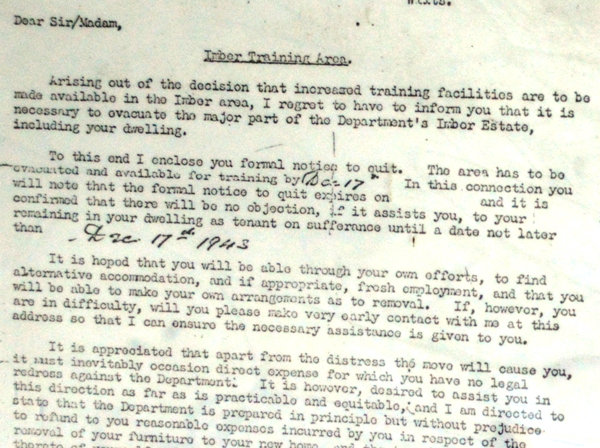
You don’t expect to find a church completely surrounded by a double ring of barbed wire in the heart of the English countryside. But then St Giles is no ordinary church, with very few services and access to the building allowed for a maximum of 50 days a year. For the rest of the time the church and the empty buildings of Imber on Salisbury Plain are strictly off-limits to anyone except those on active military duty.
Imber was once a lively community, with residents living in homes leased by the Ministry of Defence. St Giles was in turn a thriving parish, with the 13th church acting as the hub of a closely-knit community. Then in November 1943, without any prior warning, the tenants received a letter giving them a little over a month to evacuate their homes and find alternative places to live. The village was needed for D Day rehearsals (although of course the residents were not given any such details). With the assurance that they would be allowed back to their homes once the war was over, the residents of Imber packed up their belongings and left the village for what they believed would be a short-term move; nobody has been allowed back since.

Excerpt of notice of evacuation
For a few days every year public access is granted to this tiny village with a population of zero. The buildings along the main road into the village look more like concrete shells than houses – they were erected in the style of a typical German village, in preparation for house-to-house combat with the enemy of the time. They are apparently still used today for the same kind of training, although they now serve as Afghan houses. The most obvious roadside structure that looks as though it may have pre-dated the war is the old pub – the Bell Inn – although there’s little left now to suggest it was once the social hub of the village.
On the rare open days when the public is allowed into Imber, it is the church that draws in the curious visitors (it’s the only building visitors are allowed to enter). In 2002 the church of St Giles was given back to the Diocese of Salisbury, who are now responsible for its upkeep although the MoD still have a firm control on access.

So why the barbed wire surrounding what is surely one of Britain’s most secure churches? According to the volunteer on duty in the church, the wire is there to keep out soldiers who might not be in the mood for the battle rehearsals that take place in and around the village. I can only wonder whether in the past some soldiers chose to seek sanctuary in the church and let the mock battle rage outside. Whatever the full story, the coils of barbed wire make a very unsettling addition to the 13th century church and its crumbling graveyard.
For more photos from Imber check out this photo essay on Eye4apic.com (my wife’s website). For more information on Imber church, including upcoming Opening Days, see here. And here’s a post I wrote about Tyneham, a village abandoned in very similar circumstances in 1943.




